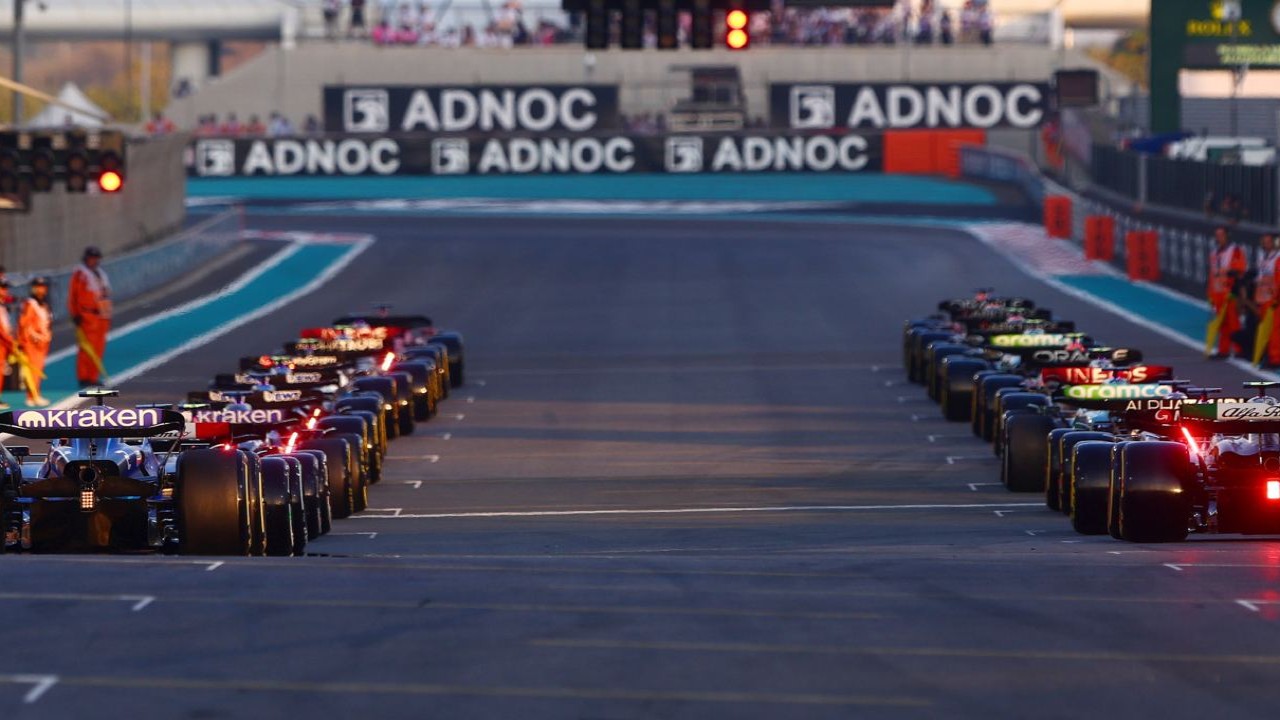What Is DRS In F1 and How Does It Work?
Explore the role of DRS in Formula 1, from its introduction and how it works to its impact on racing dynamics and what drivers think about DRS.

In Formula 1 technological innovations constantly push the boundaries of what's possible on the track.
Among these advancements, the Drag Reduction System (DRS) stands out as a game-changer.
But what exactly is DRS in F1, and how does it revolutionize the racing experience for drivers and fans alike?
This article dives into the mechanics and strategies behind DRS, shedding light on its critical role in the F1's ongoing evolution.
What Is DRS In F1?

Introduced to level the playing field and enhance overtaking opportunities, DRS has been a part of Formula 1 since 2011.
Its implementation marked a significant shift in how races are contested, with drivers now having a tangible tool to challenge competitors ahead.
The system's activation, however, is subject to strict regulations, including its use only in designated zones and when a driver is within one second of the car ahead in a race situation.
At its core, DRS in F1 is a revolutionary aerodynamic feature designed to reduce a car's drag, thereby facilitating overtaking—a critical aspect in the competitive dynamics of Formula 1.
DRS allows drivers to temporarily reduce aerodynamic drag on their car, making it faster on the straights.
The system works by adjusting the angle of the rear wing flap, thereby decreasing resistance and allowing the car to accelerate more rapidly.
This feature is only enabled in specific zones of the track and under certain conditions.
This moment of strategic overtaking not only captivates viewers but also highlights the critical role of DRS in modern Formula 1 racing.
This functionality is not just an engineering ingenuity but also adds a layer of strategic depth to races, as drivers and teams must decide the optimal moments to activate DRS for maximum advantage.
As we transition from understanding the essence of DRS to exploring its operational nuances, it's clear that this technology is more than just a speed boost—it's a catalyst for excitement and unpredictability in races, embodying the spirit of innovation that drives F1 forward.
How Does DRS Work in F1?

Moving into the technical workings of DRS, it's essential to grasp how the system enhances a car's performance and the strategic considerations it introduces for teams and drivers.
The DRS in F1 is engaged through a button on the steering wheel, but its use is strictly regulated.
Drivers can only activate DRS within designated zones and when they are within one second of the car ahead.
This restriction ensures that DRS is used as an aid for overtaking rather than a constant advantage, maintaining the competitive integrity of the sport.
With DRS activation allowing for dramatic speed increases, the art of timing and positioning becomes crucial in F1 race.
When Can You Use DRS in F1?

The utilization of the Drag Reduction System (DRS) in F1 is meticulously regulated to ensure fair competition and enhance the racing spectacle.
Drivers are permitted to use DRS within designated zones of the track, typically on long straights or where overtaking opportunities are most feasible.
However, its activation is conditional: a driver can only engage DRS when they are within one second of the car ahead at pre-determined detection points.
This rule is designed to aid overtaking by reducing the following car's aerodynamic drag, thereby increasing its speed relative to the car ahead.
Moreover, DRS usage is further restricted during the initial stages of a race.
It cannot be activated in the first two laps after the start or after a safety car period.
This regulation ensures safety and stability in the pack when cars are closely bunched together.
The strategic deployment of DRS, therefore, becomes a critical element in a driver's race strategy, offering a temporary yet potent advantage that, when used precisely, can alter the course of the race.
When Was DRS Introduced in F1?
DRS was introduced to the F1 World Championship in the 2011 season.
DRS was developed in response to concerns about the decreasing number of overtaking maneuvers in races, attributed to the aerodynamic turbulence generated by leading cars, which made it difficult for trailing cars to follow closely and attempt passes.
Prior to the introduction of DRS in F1, overtaking was often criticized for being too difficult, leading to processional races where positions rarely changed.
By reducing aerodynamic drag, DRS made it easier for drivers to overtake, thereby increasing the spectacle and competitiveness of races.
How Many Times Can You Use DRS in F1?

There is no fixed limit to the number of times a driver can activate DRS during a F1 race, as long as the conditions for its use are met—namely, being within one second of the car ahead at the detection point before a DRS zone.
This means that, theoretically, a driver could use DRS multiple times throughout a race, depending on their position relative to other cars and their ability to remain within the one-second window at DRS detection points.
The actual number of activations will vary from race to race and driver to driver, influenced by the dynamics of the race, the nature of the circuit, and the competitive situations on the track.
How Many DRS Zones Are Out There?
The number of DRS zones on a Formula 1 circuit can vary depending on the track layout and the decisions made by the FIA (Fédération Internationale de l'Automobile), the sport's governing body.
Typically, most circuits feature one or two DRS zones, designed to maximize overtaking opportunities while maintaining competitive balance and safety.
However, certain tracks may have three DRS zones if deemed suitable by the FIA to enhance racing dynamics further.
The specific locations of DRS zones are strategically chosen based on track characteristics and historical racing data to encourage overtaking in areas where it would be most feasible and impactful.
For instance, tracks with long straights or sections that naturally facilitate overtaking may have fewer DRS zones, while those with more technical sections that make overtaking challenging might feature more DRS zones to balance competition.
What Do the Drivers Think?
Driver opinions on DRS vary, with many appreciating its role in facilitating overtaking and making races more dynamic and competitive.
Some drivers and teams view DRS as a necessary tool to counteract the aerodynamic disadvantages of following closely behind another car, which can make overtaking on merit alone challenging.
“I was trying to be as clever as possible using the DRS as much as possible, so I was trying to break early into Turn 1 just to be behind him at the DRS detection, and twice it worked out,” Charles Leclerc said last year.
Juan Pablo Montoya fdescribed DRS as “giving Picasso Photoshop.”
However, there are also concerns within the paddock that DRS can sometimes make overtaking too easy, potentially diminishing the skill required to execute a pass.
Overall, while opinions on DRS differ, there's a general consensus that it has contributed positively to the sport by increasing the number of overtaking maneuvers and improving the spectacle for fans.
What Other Formula Racing Series Uses DRS?
DRS is not exclusive to Formula 1; it is also used in other racing series under the Formula racing umbrella. One prominent example is the FIA Formula 2 Championship, which serves as a feeder series to Formula 1.
Formula 2 introduced DRS in 2015 to align more closely with Formula 1, aiding in driver development by providing experience with similar technologies and racing conditions they would face in the premier class.
While the specifics of DRS usage can vary between series, its underlying goal remains the same: to improve the racing spectacle by facilitating closer competition and more overtaking opportunities.
In summary, the Drag Reduction System (DRS) has redefined overtaking dynamics in F1, making races more competitive and exciting since its inception in 2011.
While views on DRS vary, its overall contribution to the sport is undeniable, offering a blend of strategy and thrill that keeps fans on the edge of their seats.





 JOIN OUR WHATSAPP CHANNEL
JOIN OUR WHATSAPP CHANNEL


































































































